Canadian trucker's dream
A dump truck, known also as a dumper truck or tipper truck is used for taking dumps (such as sand, gravel, or demolition waste) for construction. A typical dump truck is equipped with an open-box bed, which is hinged at the rear and equipped with hydraulic rams to lift the front, allowing the material in the bed to be deposited ("dumped") on the ground behind the truck at the site of delivery.
Today, virtually all dump trucks operate by hydraulics and they come in a variety of configurations each designed to accomplish a specific task in the construction material supply chain.
A standard dump truck is a truck chassis with a dump body mounted to the frame. The bed is raised by a vertical hydraulic ram mounted under the front of the body, or a horizontal hydraulic ram and lever arrangement between the frame rails, and the back of the bed is hinged at the back of the truck. The tailgate can be configured to swing up on top hinges (and sometimes also to fold down on lower hinges) or it can be configured in the "High Lift Tailgate" format wherein pneumatic rams lift the gate open and up above the dump body.
A Roll-off has a hoist and subframe, but no body, it carries removable containers. The container is loaded on the ground, then pulled onto the back of the truck with a winch and cable. The truck goes to the dump site, after it has been dumped the empty container is taken and placed to be loaded or stored. The hoist is raised and the container slides down the subframe so the rear is on the ground. The container has rollers on the rear and can be moved forward or back until the front of it is lowered onto the ground. The containers are usually open-topped boxes used for rubble and building debris, but rubbish compactor containers are also carried.
Snow chains, or tire chains, are devices fitted to the tires of vehicles to provide maximum traction when driving through snow and ice.
Snow chains attach to the drive wheels of a vehicle or special systems deploy chains which swing under the tires automatically. Although named after steel chain, snow chains may be made of other materials and in a variety of patterns and strengths. Chains are usually sold in pairs and often must be purchased to match a particular tire size (tire diameter and tread width), although some designs can be adjusted to fit various sizes of tire. Driving with chains reduces fuel efficiency, and can reduce the allowable speed of the automobile to approximately 50 km/h (30 mph), but increase traction and braking on snowy or icy surfaces. Some regions require chains to be used under some weather conditions, but other areas prohibit the use of chains, as they can deteriorate road surfaces.
-
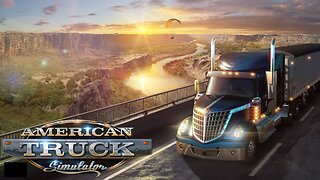 22:11
22:11
Gunthrek
3 months agoGoals and Aspirations | International Lonestar | American Truck Simulator
6 -
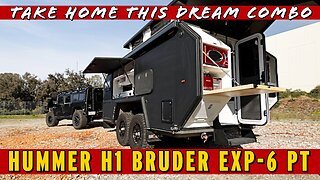 13:52
13:52
Predator Inc
1 year agoDREAM COMBO HUMMER H1 BRUDER EXP 6 PT COULD BE YOURS!
532 -
 4:29
4:29
Trucking Inside
1 year agoNot A Real Trucker Unless You're An Owner Operator
48 -
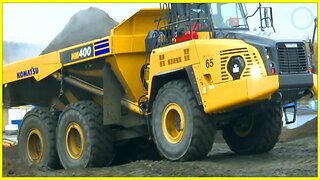 25:07
25:07
AnDaHydraulic
1 year agoTop 9 World's Biggest & Most Powerful Articulated Dumper Trucks
11 -
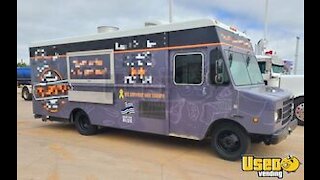 1:05
1:05
Food Trucks for Sale
2 years ago2002 Workhorse P42 Diesel 28' Food Truck with 2021 V-Nose 18' Trailer for Sale in North Dakota
458 -
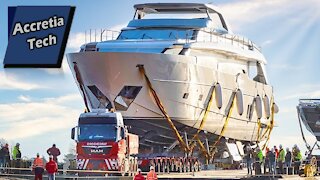 11:20
11:20
Accretia Tech
2 years ago $0.01 earnedAmazing Oversize Loading Truck Transportation Process With Modern Machines And Skillful Drivers
47 -
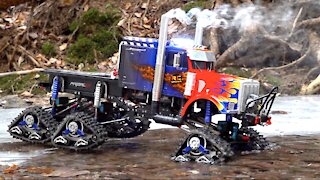 5:49
5:49
RCSparks Studio
2 years ago $0.01 earned6WD ALL-TRACKED SEMI TRUCK - OPTiMUS OVERKiLL : ICE ROAD CHALLENGE (6x6x6) | RC ADVENTURES
74 -
 15:16
15:16
16mm Educational Films
4 months agoCareer in Trucking - Semi-Trucks of the 1950's
16 -
 9:04
9:04
Never Stop Trucking
2 years ago $0.01 earnedThis is what an ideal truck driver would be like
3 -
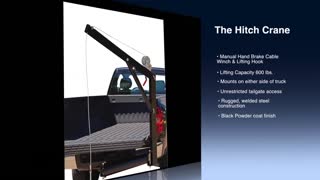 1:43
1:43
Parallel Shopping Tutorials
1 year agoPickup Truck Hitch Mounted Jib Crane
201